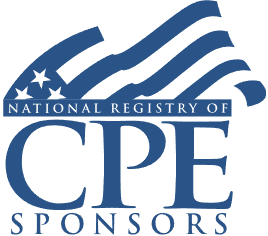Form 6198 At-Risk Limitations: IRC 465 Calculations, Grouping, Elections, and Schedules
Identifying Loss Deferrals, Recapture Requirements; Tracking Carry-Forward Amounts

Welcome! Strafford is now BARBRI! The expert courses you know from the trusted global leader in legal education.
Course Details
- smart_display Format
On-Demand
- signal_cellular_alt Difficulty Level
Intermediate
- work Practice Area
Tax Preparer
- event Date
Wednesday, April 20, 2022
- schedule Time
1:00 p.m. ET./10:00 a.m. PT
- timer Program Length
110 minutes
-
BARBRI is a NASBA CPE sponsor and this 110-minute webinar is accredited for 2.0 CPE credits.
-
BARBRI is an IRS-approved continuing education provider offering certified courses for Enrolled Agents (EA) and Tax Return Preparers (RTRP).
This course will provide tax advisers with an advanced guide to reporting loss limitations on Form 6198. The panel will have an in-depth discussion into the Section 465 rules and offer comprehensive and practical guidance on the complexities of maintaining at-risk amount schedules and carry-forwards. The webinar will also detail tactics for freeing up carry-forward losses and dealing with loss recapture.
Faculty

Mr. Coppinger has been advising clients in the areas of tax information reporting and IRS practice and procedure for more than 24 years. He provides tax consulting and audit representation related services to the firm's asset management, private equity, and hedge fund clients. His practice focuses on domestic and nonresident alien tax information reporting and withholding obligations, the Foreign Account Tax Compliance Act, The Common Reporting Standard and withholding foreign partnerships. Mr. Coppinger has served on the IRS Relations Committee of the New York State Society of CPAs and the IRS’ Information Reporting Program Advisory Committee where he sat on the International Reporting and Withholding subcommittee.

Mr. Hadwen joined ARB in 2021. He is a Director specializing in providing comprehensive tax compliance and tax consulting relating to partnership, corporate, individual, construction, manufacturing, and professional service firm, and real estate taxation. Prior to joining ARB, Mr. Hadwen was a Tax Principal at a large, regional CPA firm.
Description
The at-risk loss limitation rules of IRC 465 have long challenged taxpayers and tax advisers alike. Section 465 serves as a barrier to prevent taxpayers holding partnership or S corporation shares from deducting current tax losses for activities that do not have an economic loss. For advisers and compliance professionals, determining which losses can be currently deducted and which must be deferred is complex.
Section 465(a) limits the current tax losses an individual may deduct from certain activities to the amount the taxpayer is "at-risk" for that activity. The Section further defines amounts at risk as the amount the taxpayer contributed to the activity in cash and the adjusted basis of any other property, along with any recourse debt incurred directly for use in the activity. At-risk limitation calculations are reported on Form 6198.
Section 465 is one of three provisions taxpayers must contend with to claim losses from partnership or S corp ownership. Tax professionals must have a thorough and practical grounding of the at-risk rules, including activity grouping rules and how Section 465 works with basis limitations and Section 469 passive activity loss rules to avoid costly tax mistakes.
Listen as our experienced panel of practitioners offers a thorough and practical guide to the planning, calculation, and reporting requirements of Section 465 at-risk limitation rules.
Outline
- Taxpayers and activities subject to Section 465 at-risk limitations
- Activities that must be reported separately
- Aggregation rules
- Determination of amounts at risk
- Nonrecourse debt and amounts deemed not at risk
- Recapture rules
- Form 6198
Benefits
The panel will discuss these and other important topics:
- What does--and does not--qualify as "at-risk" for purposes of calculating loss limitation on pass-through activities?
- What are elections and grouping approaches are available to minimize the impact of loss deferral due to at-risk limitations?
- Reporting carry-forwards and recapture of prior loss deductions on Form 6198
- Maintaining schedules and substantiation of carry-forward disallowed losses
NASBA Details
Learning Objectives
After completing this course, you will be able to:
- Establish what constitutes at-risk amounts for purposes of loss limitation calculations
- Discern activities that may or must be grouped and which activities must be separated for the amount at-risk limitation purposes
- Determine available elections to minimize loss limitations
- Recognize scenarios where deferral, or recapture, of deductions based on at-risk loss limitations occur
- Identify calculations and required schedules to complete Form 6198
- Field of Study: Taxes
- Level of Knowledge: Intermediate
- Advance Preparation: None
- Teaching Method: Seminar/Lecture
- Delivery Method: Group-Internet (via computer)
- Attendance Monitoring Method: Attendance is monitored electronically via a participant's PIN and through a series of attendance verification prompts displayed throughout the program
- Prerequisite: Three years+ business or public firm experience at mid-level within the organization, preparing complex tax forms and schedules, supervising other preparers/accountants. The webinar assumes specific knowledge and understanding of the Section 469 Passive Activity Rules, the material participation rules, recognizing complex K-1 schedules; familiarity with the grouping disclosure rules,

Strafford Publications, Inc. is registered with the National Association of State Boards of Accountancy (NASBA) as a sponsor of continuing professional education on the National Registry of CPE Sponsors. State boards of Accountancy have final authority on the acceptance of individual courses for CPE Credits. Complaints regarding registered sponsons may be submitted to NASBA through its website: www.nasbaregistry.org.

Strafford is an IRS-approved continuing education provider offering certified courses for Enrolled Agents (EA) and Tax Return Preparers (RTRP).
Unlimited access to premium CLE courses:
- Annual access
- Available live and on-demand
- Best for attorneys and legal professionals
Unlimited access to premium CPE courses.:
- Annual access
- Available live and on-demand
- Best for CPAs and tax professionals
Unlimited access to premium CLE, CPE, Professional Skills and Practice-Ready courses.:
- Annual access
- Available live and on-demand
- Best for legal, accounting, and tax professionals
Unlimited access to Professional Skills and Practice-Ready courses:
- Annual access
- Available on-demand
- Best for new attorneys
Related Courses

Redemptions of Partnership Interests: Sections 736(b) vs. 736(a)
Friday, October 31, 2025
1:00 p.m. ET./10:00 a.m. PT

Multistate Tax Treatment of Multi-Tier Partnerships: Ingesting PTET in a Multi-Tier Entity
Friday, September 19, 2025
1:00 p.m. ET./10:00 a.m. PT

IRA Distributions and RMDs: Minimizing Taxes and Meeting SECURE 2.0 Requirements
Available On-Demand

Avoiding Gift and Estate Audit Triggers: Anticipating Audit Issues, IDRs, and Appeals
Tuesday, September 9, 2025
1:00 p.m. ET./10:00 a.m. PT
Recommended Resources
How CPE Can Bridge the Gap Between What You Know and What You Need to Know
- Career Advancement